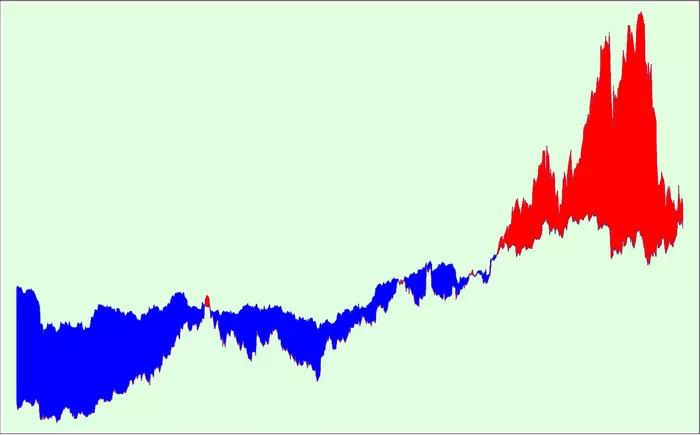Short selling, also known as “shorting,” is a trading strategy used by investors to profit from a decline in a stock’s price. While it can be a powerful tool for experienced traders, it carries significant risks and requires a thorough understanding of the mechanics and implications. In this article, we will explore the concept of short selling, how it works, its benefits and risks, and its impact on the broader market.
Understanding Short Selling
Short selling is the practice of selling a stock that you do not own, with the intention of buying it back later at a lower price. The process involves borrowing shares of the stock from another investor, selling them on the open market, and then repurchasing the shares at a later date to return to the lender. If the stock price falls as anticipated, the trader can buy the shares back at the lower price, returning them to the lender and pocketing the difference as profit.
The Mechanics of Short Selling
Borrowing Shares: To initiate a short sale, the trader must first borrow shares of the stock from a brokerage. This is usually done through a margin account, which allows the trader to borrow funds and securities from the broker.
Selling the Shares: Once the shares are borrowed, they are sold on the open market at the current market price. The proceeds from the sale are held in the trader’s margin account.
Repurchasing the Shares: At a later date, the trader must buy back the same number of shares, ideally at a lower price than the initial sale price.
Returning the Shares: After repurchasing the shares, they are returned to the lender. The difference between the sale price and the repurchase price is the trader’s profit, minus any fees or interest charged by the brokerage.
Example of Short Selling
Suppose an investor believes that Company XYZ’s stock, currently trading at $100 per share, is overvalued and will decline in price. The investor borrows 100 shares of XYZ and sells them for $10,000 (100 shares x $100 per share). A few weeks later, the stock price falls to $80 per share. The investor buys back the 100 shares for $8,000 (100 shares x $80 per share) and returns them to the lender. The profit from the short sale is $2,000 ($10,000 – $8,000), minus any associated fees and interest.
Benefits of Short Selling
Profit from Declining Markets
Short selling allows traders to profit from declining stock prices. In bearish or down-trending markets, short selling can be a valuable tool for generating returns.
Hedging and Risk Management
Short selling can be used as a hedge against other investments. For example, an investor who holds a long position in a stock may short sell a related stock to offset potential losses if the market moves against them.
Market Efficiency
Short selling contributes to market efficiency by helping to identify overvalued stocks. When traders short sell, they are betting against the stock’s price, which can bring attention to underlying issues with the company and potentially correct market inefficiencies.
Risks of Short Selling
Unlimited Loss Potential
Unlike buying stocks, where the maximum loss is limited to the amount invested, short selling has theoretically unlimited loss potential. If the stock price rises significantly instead of falling, the losses can exceed the initial investment.
Margin Requirements and Interest Costs
Short selling requires a margin account, which means the trader must maintain a certain level of equity in the account. If the stock price rises, the trader may face a margin call, requiring them to deposit additional funds to cover potential losses. Additionally, the trader must pay interest on the borrowed shares, which can add to the overall cost of the trade.
Short Squeeze
A short squeeze occurs when a heavily shorted stock experiences a sharp rise in price. As the stock price increases, short sellers may be forced to buy back shares to cover their positions, driving the price even higher. This can lead to rapid and substantial losses for those who are short selling.
See Also: What Are Dividend Stocks?
Short Selling and Market Impact
Price Discovery
Short selling plays a role in price discovery by providing information about a stock’s potential value. When traders short sell, they are expressing their belief that the stock is overvalued, which can lead to price adjustments and more accurate stock valuations.
Market Volatility
While short selling can contribute to market efficiency, it can also increase market volatility. Large-scale short selling can exacerbate price declines and lead to heightened market fluctuations, especially during periods of market stress.
Regulatory Considerations
Regulators closely monitor short selling to prevent abuse and ensure market stability. Rules such as the “uptick rule” and “short-sale restrictions” are designed to mitigate the potential negative impact of short selling on market stability. These regulations can vary by country and may change in response to market conditions.
Short Selling vs. Long Selling
Long Selling
Long selling, or simply buying stocks, involves purchasing shares with the expectation that their price will rise. The maximum loss in a long position is limited to the amount invested, while potential gains are theoretically unlimited.
Short Selling
In contrast, short selling involves selling borrowed shares with the expectation that their price will decline. The maximum gain in a short position is limited to the initial sale price, while potential losses are theoretically unlimited.
How to Get Started with Short Selling
Open a Margin Account
To short sell, you must have a margin account with a brokerage. This account allows you to borrow shares and leverage your investments. Ensure that you understand the margin requirements and fees associated with the account.
Research and Analysis
Conduct thorough research and analysis before initiating a short sale. Evaluate the stock’s fundamentals, technical indicators, and market conditions to determine if short selling is a viable strategy.
Risk Management
Implement risk management strategies, such as setting stop-loss orders and monitoring your positions closely. Be prepared for potential margin calls and ensure that you have sufficient funds in your account to cover any adverse price movements.
Stay Informed
Keep abreast of market news, regulatory changes, and developments related to the stock you are short selling. Staying informed will help you make timely and informed decisions about your short positions.
Conclusion
Short selling is a sophisticated trading strategy that can be used to profit from declining stock prices, hedge other investments, and contribute to market efficiency. However, it carries significant risks, including unlimited loss potential, margin requirements, and the possibility of a short squeeze. As with any trading strategy, it is essential to conduct thorough research, manage risks effectively, and stay informed about market conditions.
By understanding the mechanics of short selling and its implications, investors can make informed decisions and utilize this strategy as part of a broader trading plan. Whether you are an experienced trader or a newcomer to the world of short selling, it is crucial to approach this strategy with caution and a clear understanding of its potential risks and rewards.
[inline_related_posts title=”You Might Be Interested In” title_align=”left” style=”list” number=”3″ align=”none” ids=”3729,3733,3703″ by=”categories” orderby=”rand” order=”DESC” hide_thumb=”no” thumb_right=”no” views=”no” date=”yes” grid_columns=”2″ post_type=”” tax=””]





























